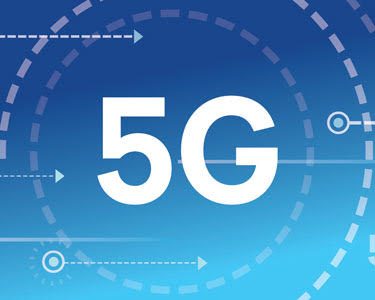The hopes for what 5G can accomplish are a testament to mobile’s triumph.
Mobile has been so successful, on such a massive scale, that it has become the largest technology platform in human history. The promise of 5G is taking everything we have learned, evolving it, and extending it to every industry, every object, and every connection.
It’s interesting that, in the thicket of competing assertions about 5G leadership, nearly all claimants speak of being on the “path” or “road” to 5G.
All paths start somewhere. 5G is the next destination on a course that began decades ago with the digitization of wireless communication. At the start of that path, and at every step along the way, is Qualcomm. Our inventions and technology made this journey possible. It’s where we began, where we are, and where we’re headed.
Mobile does not change abruptly. The cellular system has been so successful specifically because of the continuity between generations, even when they used fundamentally different radio technologies. No operator ever uprooted their existing network and replaced it with a new generation overnight. Multiple generations exist side-by-side, and make each other successful. Early 4G networks, for example, were viable because multi-mode 3G/4G devices were able to fall back to the mature 3G infrastructure. It took expertise in 3G to succeed in 4G.
And here we are, once again, at the boundary between generations. Will this time be different? Can one company succeed in 5G without leading in 4G? Will those who have not focused on mobile first be the ones to bring mobile technology to new devices, industries, and markets?
Both history and logic say “no.” 5G is a revolution enabled by evolution. It’s the next step along the 4G path Qualcomm has led for nearly a decade.
And look what it will bring us: ultra-reliable, ultra-low latency communication between self-driving cars. Sensors that add intelligence to city infrastructure. Multi-gigabit per second mobile broadband speeds. And applications we can’t even imagine yet. By 2035, when 5G’s full economic benefit should be realized, it will help a broad range of industries produce up to $12.3 trillion worth of goods and services, according to an independent research study, The 5G Economy, we recently commissioned.1
Underpinning these advances is everything we’ve pioneered about aggregation of different spectrum types and bands, about antenna technology, about modulation and coding, about pushing the boundaries of wireless technology. Every innovation interlocks and forms a continuum with all the ones that came before it to create amazing breakthroughs. Here are several that we’re very excited about:
Gigabit LTE, designed to deliver fiber-optic Internet speeds wirelessly, is giving us the first real glimpse into our 5G future. Gigabit LTE is designed to provide blazing fast speeds over wide geographic areas. That makes it suitable as the high-speed coverage layer that will provide a consistent experience on early 5G networks (in the same manner that mature generation 3G networks helped nascent 4G LTE networks). Gigabit LTE will be the anchor of the 5G mobile experience.
Our first-generation Gigabit LTE modem, the Qualcomm Snapdragon X16, has already helped bring the world’s first Gigabit LTE device and network to life. As part of the Snapdragon 835 mobile platform, it is supporting Gigabit LTE in leading smartphones, including some that will be announced at Mobile World Congress, just as operators around the world are publicly talking about their plans to deploy Gigabit LTE.
But we’re not resting. Last week, we announced Snapdragon X20, our second-generation Gigabit LTE modem. The Snapdragon X20 LTE modem brings new flexibility that will help a larger number of operators around the world to deploy Gigabit LTE. We’re already sampling this second-generation Gigabit LTE modem while others have yet to ship their first generation.
And our R&D efforts on 5G continue unabated. Last week we announced a very significant industry milestone that’s different than many of the other 5G demos and tests that are filling the news. It was the first successful 5G connection based upon the 3GPP New Radio (NR) work, which is expected to become the global 5G standard.
Our 5G NR demonstration showcased several advanced technologies based on key design decisions that have been made as part of the ongoing 5G NR 3GPP Study Item, illustrating the tremendous progress towards delivering the first 5G NR specification – the global 5G standard. Standards-setting can be challenging, but there are times when broad consensus forms around how to adapt the process to address specific market needs.
As a result, Qualcomm and fellow mobile industry leaders including AT&T, NTT DOCOMO, SK Telecom, Vodafone, and Ericsson, have galvanized a coalition of companies announcing their commitment to accelerate 5G NR for large-scale trials and deployments starting in 2019 instead of 2020. Along with our partners, we will support a corresponding proposal to formalize the acceleration at 3GPP’s next meeting in March.
We are doing so to meet demand for the enhanced mobile broadband benefits of 5G NR sooner, while continuing to address the larger vision for 5G NR in 2020 and beyond. The announcement showcases Qualcomm’s desire, and ability, to form broad consensus within the mobile industry, allowing members of the mobile ecosystem to confidently move forward at scale.
But an accelerated timeline for 5G NR would be incomplete without supporting devices. So, we are introducing the expansion of the industry’s first-announced 5G modem family to include new multi-mode 2G/3G/4G/5G modems that support the global 5G NR standard and Gigabit LTE on a single chip. These new members of the Snapdragon X50 modem family are poised to be at the heart of some of the earliest 5G NR premium smartphones, allowing users to enjoy gigabit and even multi-gigabit speeds.
Where does the path go after that? Wherever it is, we have confidence that Qualcomm will be leading the way.

